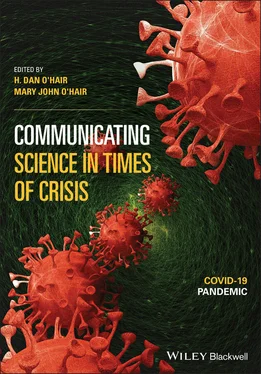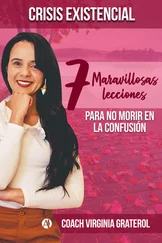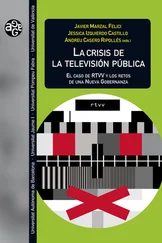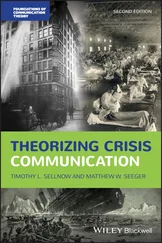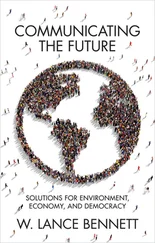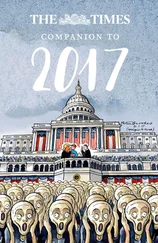20 Bondielli, A., & Marcelloni, F. (2019). A survey on fake news and rumour detection techniques. Information Sciences, 497, 38–55. https://doi.org/10.1016/j.ins.2019.05.035
21 Bradshaw, S., & Howard, P. N. (2018). The global organization of social media disinformation campaigns. Journal of International Affairs, 71(1.5), 23–31. https://www.jstor.org/stable/26508115
22 Bradshaw, S., Howard, P. N., Kollanyi, B., & Neudert, L.-M. (2020). Sourcing and automation of political news and information over social media in the United States, 2016–2018. Political Communication, 37(2), 173–193. https://doi.org/10.1080/10584609.2019.1663322
23 Brennen, J. S., Simon, F. M., Howard, P. N., & Nielsen, R. K. (2020, April). Types, sources, and claims of COVID-19 misinformation. Reuters Institute for the Study of Journalism, University of Oxford. https://reutersinstitute.politics.ox.ac.uk/types-sources-and-claims-covid-19-misinformation
24 Britton, T., Ball, F., & Trapman, P. (2020). A mathematical model reveals the influence of population heterogeneity on herd immunity to SARS-CoV-2. Science, 369(6505), 846–849. https://doi.org/10.1126/science.abc6810@
25 Brody, D. C., & Meier, D. M. (2018). How to model fake news. arXiv:1809.00964v2
26 Brotherton, R. (2013, September). Towards a definition of ‘conspiracy theory’. PSYPAG Quarterly, 88, 9–14. http://www.psypag.co.uk/wp-content/uploads/2013/09/Issue-88.pdf
27 Brotherton, R., & French, C. C. (2014). Belief in conspiracy theories and susceptibility to the conjunction fallacy. Applied Cognitive Psychology, 28(2), 238–248. https://doi.org/10.1002/acp.2995
28 Brotherton, R., & French, C. C. (2015). Intention seekers: Conspiracist ideation and biased attributions of intentionality. PloS One, 10(5), e0124125. https://doi.org/10.1371/journal.pone.0124125
29 Brotherton, R., French, C. C., & Pickering, A. D. (2013, May). Measuring belief in conspiracy theories: The generic conspiracist beliefs scale. Frontiers in Psychology, 4, 279. https://doi.org/10.3389/fpsyg.2013.00279
30 Bruder, M., Haffke, P., Neave, N., Nouripanah, N., & Imhoff, R. (2013, December). Measuring individual differences in generic beliefs in conspiracy theories across cultures: Conspiracy mentality questionnaire. Frontiers in Psychology, 4. https://doi.org/10.3389/fpsyg.2013.00225
31 Bryant, E. (2008). Real lies, white lies and gray lies: Towards a typology of deception. Kaleidoscope, 7, 23–48. https://digitalcommons.trinity.edu/hct_faculty/6
32 Buller, D. B., & Burgoon, J. K. (1996). Interpersonal deception theory. Communication Theory, 6(3), 203–242. https://doi.org/10.1111/j.1468-2885.1996.tb00127.x
33 Burgess, A. W., & Hartman, C. R. (2018). On the origin of grooming. Journal of Interpersonal Violence, 33(1), 17–23. https://doi.org/10.1177/0886260517742048
34 Butter, M., & Knight, P. (2016). Bridging the great divide: Conspiracy theory research for the 21st century. Diogenes, 1–13. https://doi.org/10.1177/0392192116669289
35 Caballero, E. G. (2020). Social network analysis, social big data and conspiracy theories. In M. Butter & P. Knight (Eds.), Routledge handbook of conspiracy theories (pp. 135–147). Routledge.
36 Calisher, C., Carroll, D., Colwell, R., Corley, R. B., Daszak, P., Drosten, C., Enjuanes, L., Farrar, J., Field, H., Golding, J., Gorbalenya, A., Haagmans, B., Hughes, J. M., Karesh, W. B., Keusch, G. T., Lam, S. K., Lubroth, J., Mackenzie, J. S., Madoff, L., & Turner, M. (2020). Statement in support of the scientists, public health professionals, and medical professionals of China combatting COVID-19. Lancet, 395(10226), e42–e43. https://doi.org/10.1016/S0140-6736(20)30418-9
37 Cantarero, K., Van Tilburg, W. A. P., & Szarota, P. (2018, November). Differentiating everyday lies: A typology of lies based on beneficiary and motivation. Personality and Individual Differences, 134, 252–260. https://doi.org/10.1016/j.paid.2018.05.013
38 Carlson, M. (2020). Fake news as an informational moral panic: The symbolic deviancy of social media during the 2016 US presidential election. Information, Communication & Society, 23(3), 374–388. https://doi.org/10.1080/1369118X.2018.1505934
39 Carmichael, A. G. (1998). The last past plague: The uses of memory in Renaissance epidemics. Journal of the History of Medicine and Allied Sciences, 53(2), 132–160. https://doi.org/10.1093/jhmas/53.2.132
40 Centers for Disease Control and Prevention. (2019). Prioritizing zoonotic diseases for multisectoral, one health collaboration in the United States (Workshop summary). https://www.cdc.gov/onehealth/what-we-do/zoonotic-disease-prioritization/us-workshops.html
41 Chou, W.-Y. S., Oh, A., & Klein, W. M. P. (2018). Addressing health-related misinformation on social media. JAMA, 320(23), 2417–2418. https://doi.org/10.1001/jama.2018.16865
42 Clarke, S. (2002). Conspiracy theories and conspiracy theorizing. Philosophy of the Social Sciences, 32(2), 131. https://doi.org/10.1177/004931032002001
43 Clementson, D. E. (2017). Truth bias and partisan bias in political deception detection. Journal of Language and Social Psychology, 37(4), 407–430. https://doi.org/10.1177%2F0261927X17744004
44 Cohn, S. K., Jr. (2007). The Black Death and the burning of Jews. Past & Present, 196(1), 3–36. https://doi.org/10.1093/pastj/gtm005
45 Cohn, S. K. (2012). Pandemics: Waves of disease, waves of hate from the plague of Athens to A.I.D.S. Historical Research, 85(230), 535–555. https://doi.org/10.1111/j.1468-2281.2012.00603.x
46 Connolly, J. M., Uscinski, J. E., Klofstad, C. A., & West, J. P. (2019). Communicating to the public in the era of conspiracy theory. Public Integrity, 21(5), 469–476. https://doi.org/10.1080/10999922.2019.1603045
47 Corrigan, R., & Denton, P. (1996). Causal understanding as a developmental primitive. Developmental Review, 16(2), 162–202. https://doi.org/10.1006/drev.1996.0007
48 Curtis, D. A., & Hart, C. L. (2020). Deception in psychotherapy: Frequency, typology and relationship. Counselling & Psychotherapy Research, 20(1), 106–115. https://doi.org/10.1002/capr.12263
49 Davis, M. (2019). Uncertainty and immunity in public communications on pandemics. In K. Bjørkdahl & B. Carlsen (Eds.), Pandemics, publics, and politics (pp. 29–42). Palgrave Macmillan. https://doi.org/10.1007/978-981-13-2802-2_3
50 Dawes, G. W. (2018). Identifying pseudoscience: A social process criterion. Journal for General Philosophy of Science, 49(3), 283–298. https://doi.org/10.1007/s10838-017-9388-6
51 de Regt, A., Montecchi, M., & Lord Ferguson, S. (2020). A false image of health: How fake news and pseudo-facts spread in the health and beauty industry. Journal of Product & Brand Management, 29(2), 168–179. https://doi.org/10.1108/JPBM-12-2018-2180
52 de Santisteban, P., del Hoyo, J., Alcázar-Córcoles, M. Á., & Gámez-Guadix, M. (2018). Progression, maintenance, and feedback of online child sexual grooming: A qualitative analysis of online predators. Child Abuse & Neglect, 80, 203–215. https://doi.org/10.1016/j.chiabu.2018.03.026
53 Del Vicario, M., Bessi, A., Zollo, F., Petroni, F., Scala, A., Caldarelli, G., Stanley, H. E., & Quattrociocchi, W. (2016). The spreading of misinformation online. Proceedings of the National Academy of Sciences of the United States of America, 113(3), 554–559. https://doi.org/10.1073/pnas.1517441113
54 Dietz, P. (2018). Grooming and seduction. Journal of Interpersonal Violence, 33(1), 28–36. https://doi.org/10.1177/0886260517742060
55 DiMaggio, P. J. (1995). Comments on ‘What theory is not. Administrative Science Quarterly, 40(3), 391–397. https://doi.org/10.2307/2393790, https://www.jstor.org/stable/2393790
56 Douglas, K. M., & Sutton, R. M. (2011). Does it take one to know one? Endorsement of conspiracy theories is influenced by personal willingness to conspire. The British Journal of Social Psychology, 50(3), 544–552. https://doi.org/10.1111/j.2044-8309.2010.02018.x
Читать дальше
